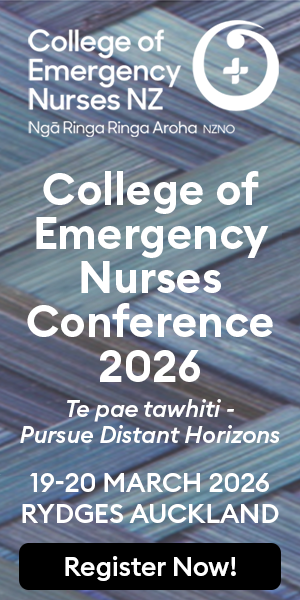Both say the trip was “life-changing”, and transformed how they deliver care in their own special care baby unit (SCBU).
“Coming back, we’ve changed our visiting policies to allow a lot more flexibility for grandparents, parents and siblings to come through [the unit] and have those first experiences together and not just two at a time,” Lomas told Kaitiaki.
He came back and said: ‘What do you think, shall we go to Samoa?’
Lomas and O’Connor were among three nurses and two paediatricians who travelled to the Western Samoan capital, Apia, in May.
The trip was organised by paediatrician Oliver Grupp after he’d spent a few months there on sabbatical and saw the need.
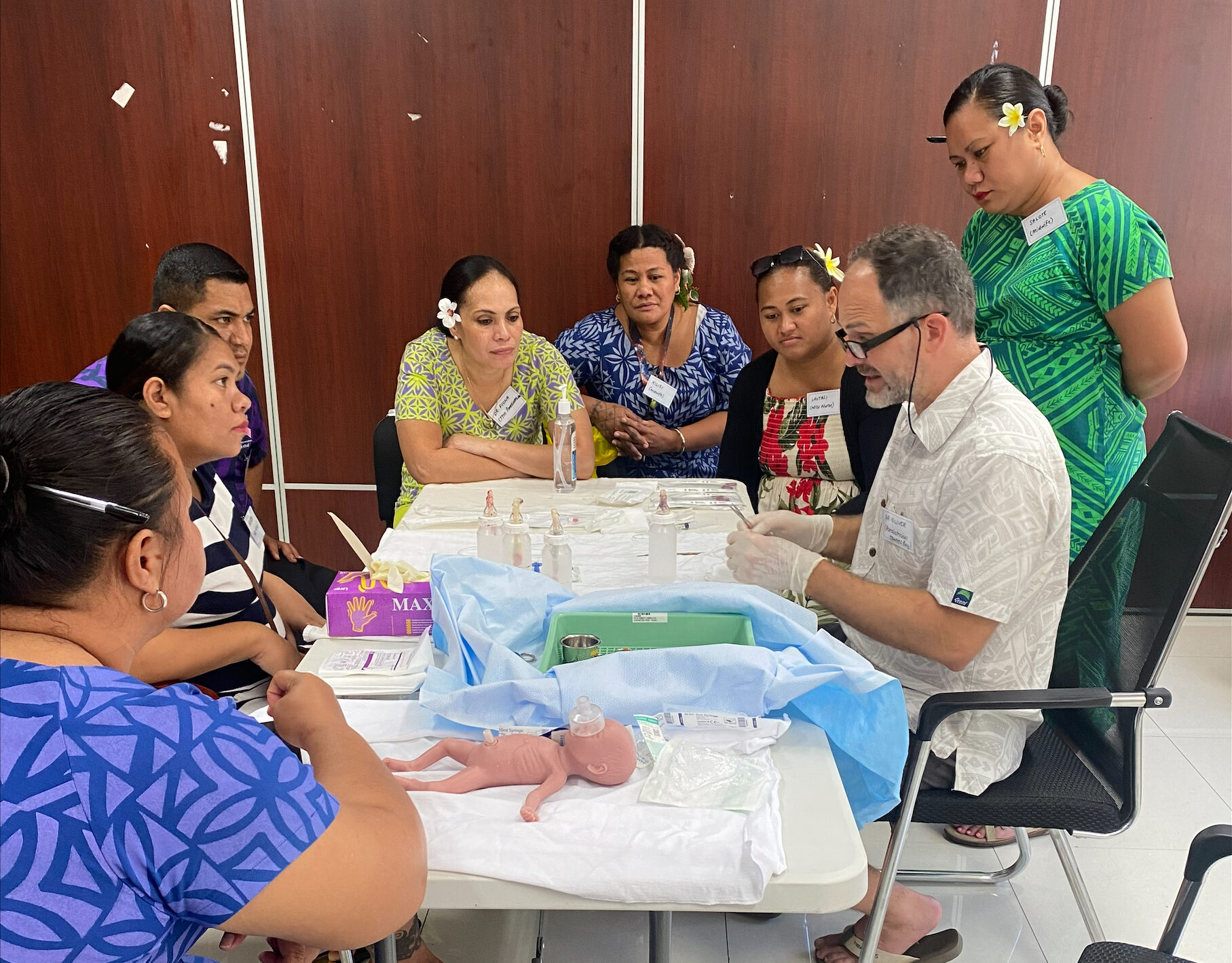
“He came back and said, ‘What do you think, shall we go to Samoa?’ ” O’Connor said.
In Samoa, newborn mortality rates are “drastically” different to here — about four times as high, Lomas said. “It’s very heart-breaking.”
While nurses in New Zealand don’t have access to the same level of professional development funding as doctors (who have a continuing medical education fund), as members of NZNO’s neonatal nurses’ college of Aotearoa, Lomas and O’Connor were able to tap into its professional education fund to help pay for the trip. A third nurse was helped by the Oliver Smales Memorial Trust (named for a late Hawke’s Bay paediatrician).
Another Hawke’s Bay paediatrician, Kai Steinmann, also donated money towards the three nurses’ flights.
The team began gathering supplies to take with them — reference books and equipment like neonatal-sized masks and prongs to make sure the CPAP (continuous positive airways pressure) neonatal respiratory support was as effective as possible.
‘We have practices we’ve brought over that will actually help prevent these babies from needing to be ventilated in the first place.’
Lomas, a former nurse educator, reached out to her extensive supplier contacts, including medical simulation specialists Laerdal, which donated a newborn mannequin for Apia’s Tupua Tamasese Meaole Hospital.
The Kiwi team got a warm welcome and bigger-than-expected turnout to the training, from health professionals across several disciplines.
“Put it this way, normally we would do a max of 16 participants for newborn life support and we had 34,” O’Connor said.
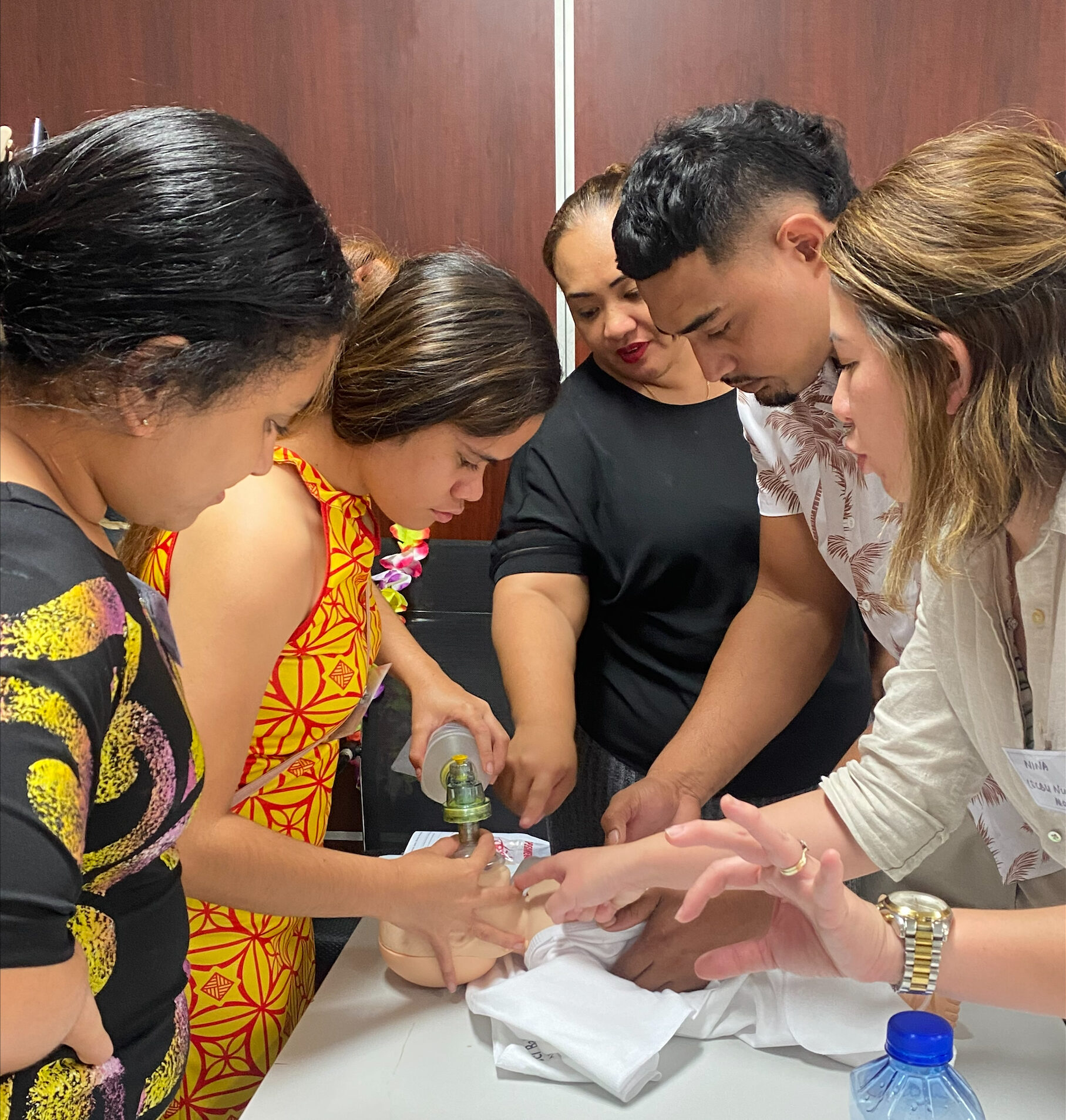
“We got ED nurses, ICU nurses, community and district nurses. Then, from the far out islands that were quite remote, they were able to send a couple of their doctors and nurses to get this training.”
Lomas said the focus was very practical, with the aim of saving more babies’ lives.
A full day was spent on practical skills needed for newborn life support and resuscitation, such as putting lines in the umbilicus and putting in chest drains.
The team also shared current neonatal respiratory support practices such as misting (minimally invasive surfactant therapy) which applies lipoprotein to the lungs nasally, avoiding intubation which has more risks.
‘It felt like we were giving them gold, that what we were passing on was really valuable.’
“We have practices we’ve brought over that will actually help prevent these babies from needing to be ventilated in the first place,” Lomas said.
Along with managing common conditions such as bronchiolitis and bronchiectasis, they shared the latest in neuro-development practices such as nesting (containing and supporting the babies), swaddle weighing (so the baby is secure when being weighed), and “kangaroo care” (skin to skin), Lomas said.
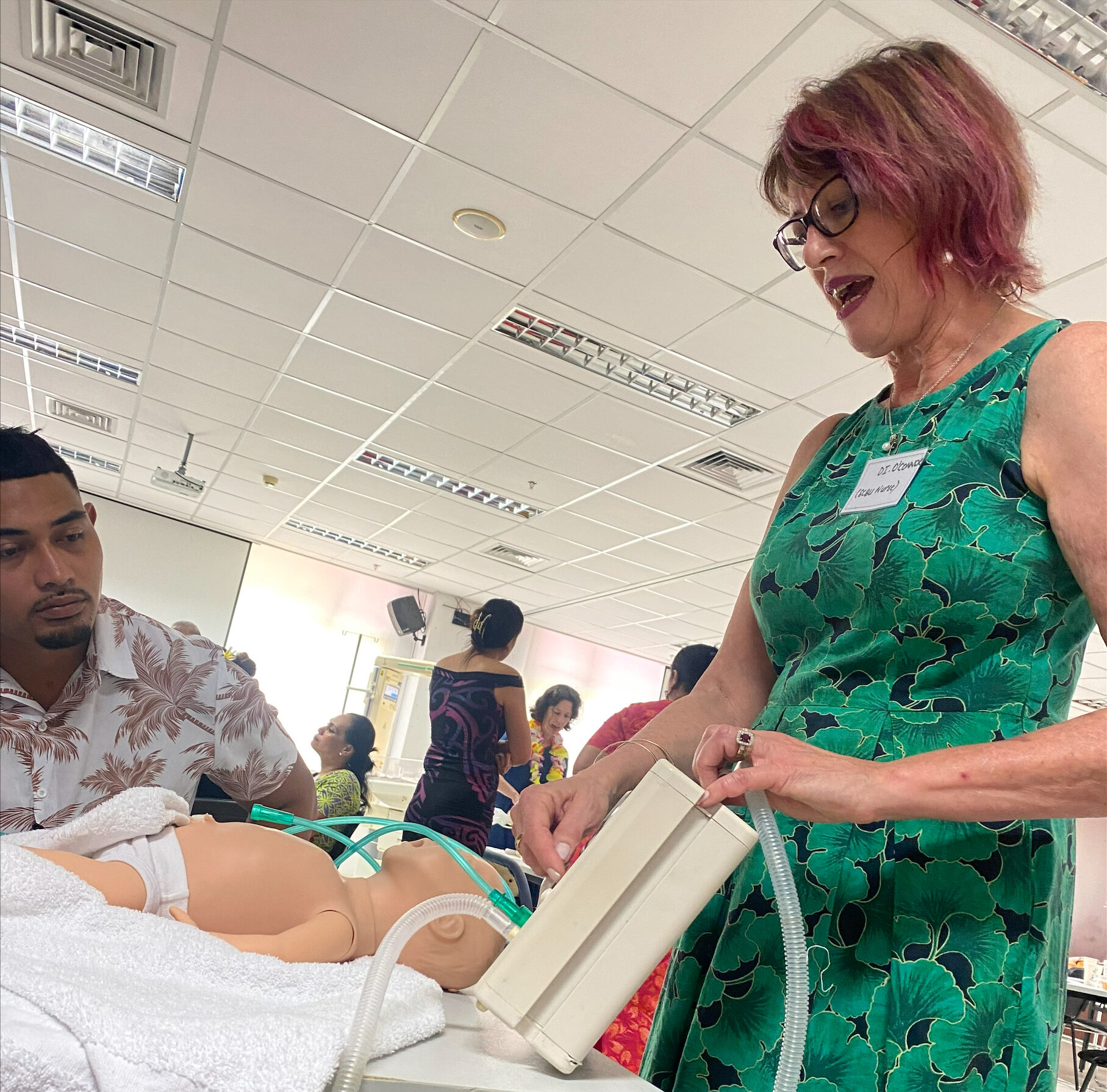
“The majority was the practical neonatal nursing side of things — focusing on neurodevelopment and all those beautiful things we’re doing in neonatal care.”
On the third and final day, they ran a “massive” simulation, Lomas said.
‘It’s given me a much clearer understanding of why they make a certain decision – or why they want a lot of family involved.’
“They were given a scenario, then we pulled people into it and it was quite a big simulation so that you actually had a team of nurses and doctors who did the training. Everyone else watched and then we debriefed about what had happened,” Lomas said. “So that was really valuable — putting all the skills together.”
The Samoan staff were incredibly appreciative, she said.
“They just loved it – they were really really grateful. It felt like we were giving them gold, that what we were passing on was really valuable.”
And the aroha was very much two-way. Along with incredible hospitality, music and “abundant, beautiful food” throughout — “Did they feed us? Oh my God!” said O’Connor — the Kiwi crew also gained some new perspectives.
Lomas and O’Connor say they better appreciate how important family is in Samoan — and many Pasifika — cultures, as well as Māori. And limited resources in the hospitals means it’s not just a nice-to-have, but essential.
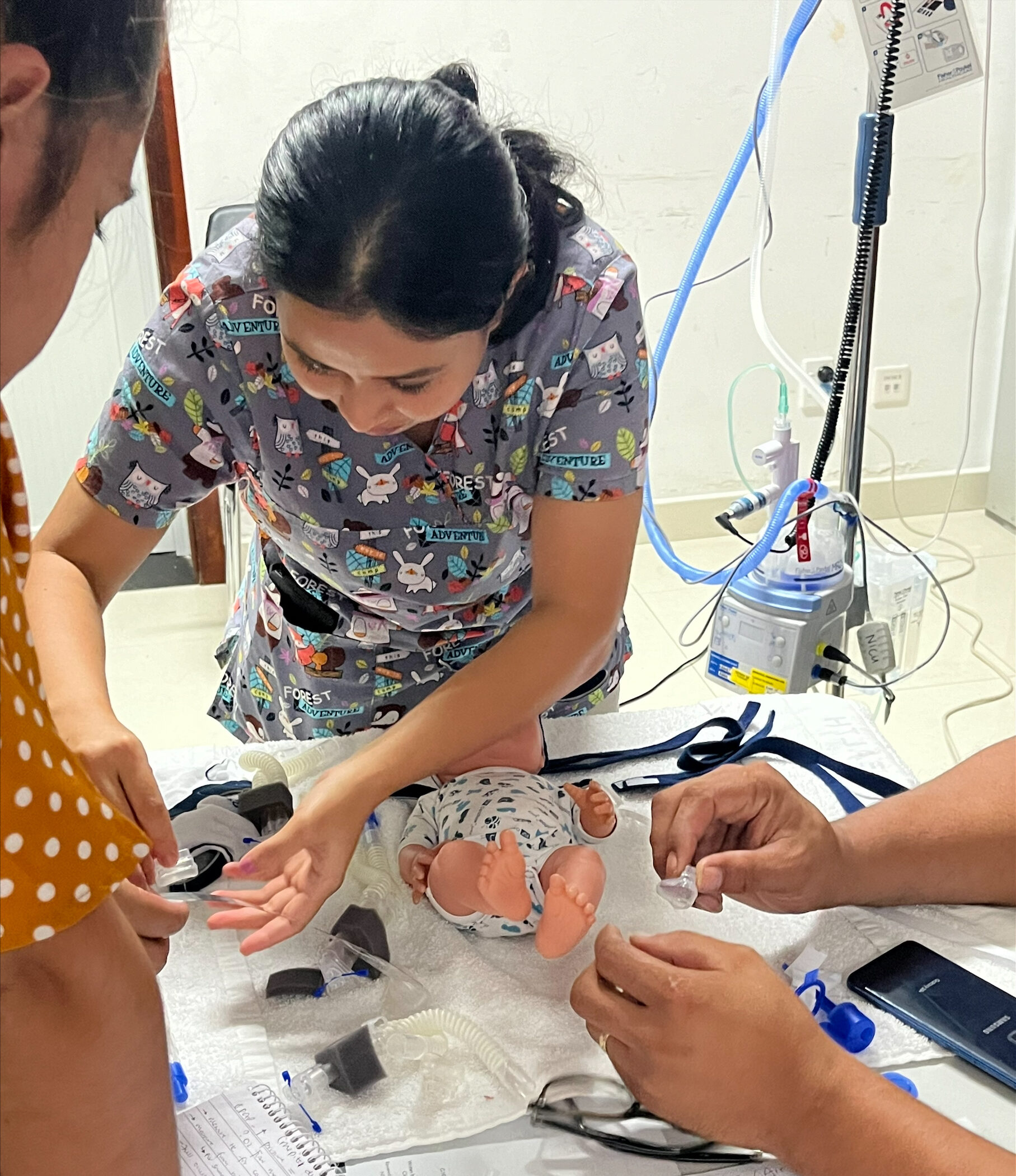
“I think it’s given me a much clearer understanding of why they make a certain decision – or why they do things, or why they want a lot of family involved,” O’Connor said.
With four nurses to up to 40 patients, staff relied on families to provide care such as washing and feeding.
‘She’d stopped the doctor from doing something that was different to what was taught on the course – and she said, ‘This is what we do now. And we saved the baby!’
“So that just reinforces the concept of family-centred care which neonatal nursing [in New Zealand] has been moving towards for the last few years,” says Lomas. “It just cements that notion of how important it is having family and whānau members there.”
On their return, they quickly loosened SCBU visiting policies, which had been restricted to just two since the COVID-19 pandemic. They also focused on making sure mums and babies were kept together as much as possible from the start, says Lomas.
Both hope to repeat the “life-changing” trip next year — if they can get the funding.
‘Did they feed us? Oh my God!’
A highlight was on the last day when they had gone into the hospital to say goodbye.
“One of the midwives came running down the corridor to talk to us,” Lomas recalls.
“She’d had a delivery where the baby needed resuscitation and she’d stopped the doctor from doing something that was different to what was taught on the course — and she said, ‘This is what we do now. And we saved the baby!’ And everything went really well and she was so excited.”
On the last day, the Samoan participants thank the Hawke’s Bay team with a farewell song.




